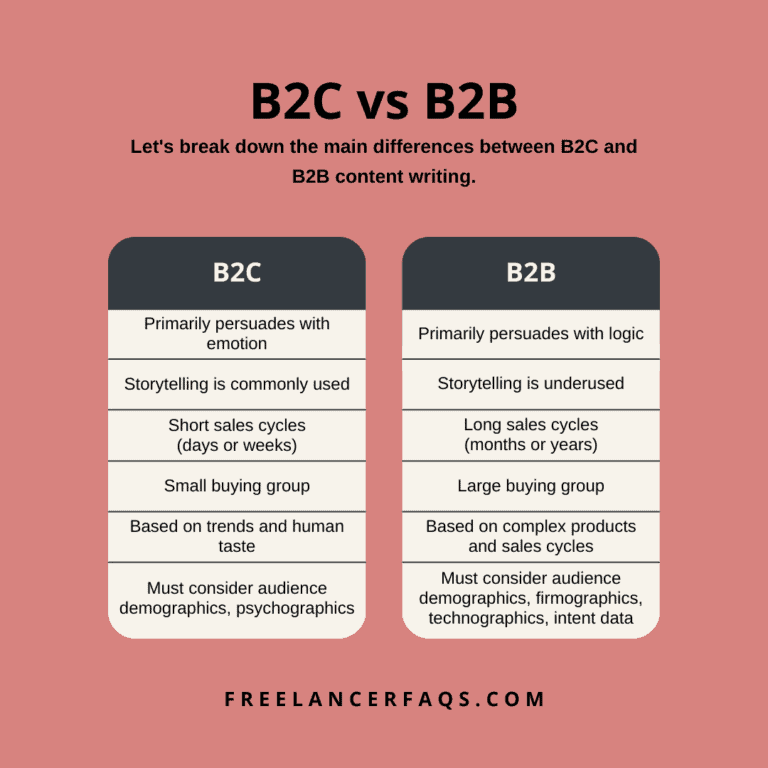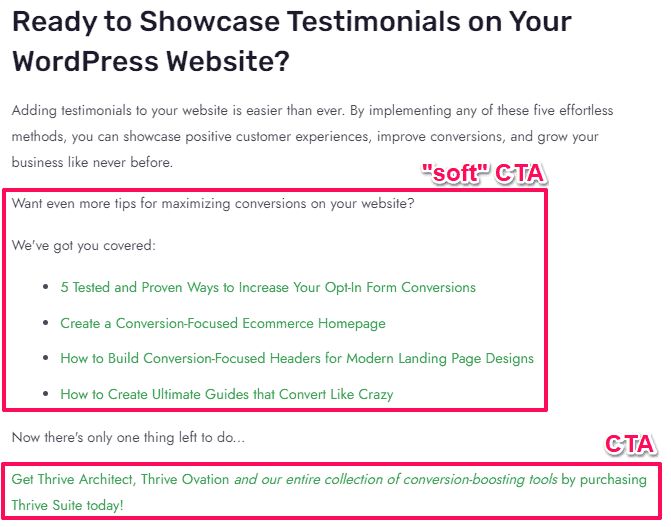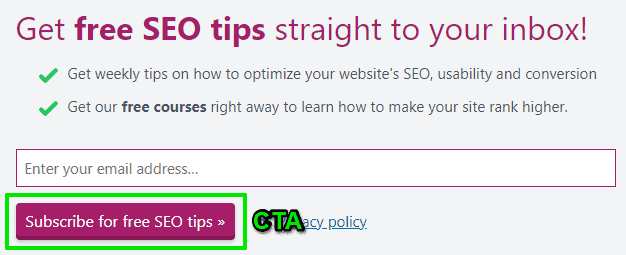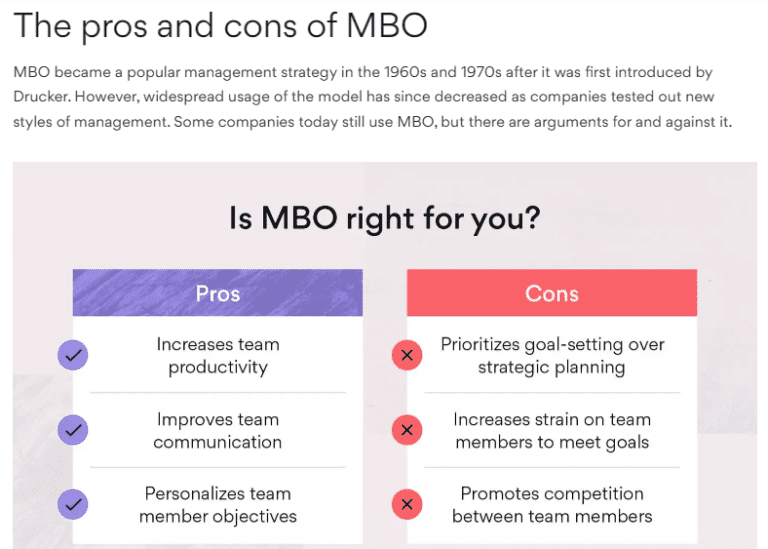B2B decision-makers spend more than 70% of the purchase cycle engaging with content and 44% say they usually consume three to five content pieces before reaching out to a sales representative.
Plus, a study found that content marketing generates 3x as many leads and costs 62% less than outbound marketing tactics.

These figures make it obvious why B2B brands are willing to spend so much on content marketing — and that includes paying high rates to freelance writers!
That’s why you’re here, right?
You want to learn how to ace B2B content writing so you can break into that exclusive club of six-figure freelance writers.
That’s perfectly doable.
But, first, you need to master a few key aspects of B2B writing.
Before I get into ten essential tips to ace B2B content writing, I’ll go over what it is, the types of services you can offer, the industries you can serve, and the average B2B writer’s salary.
Let’s get started!
Job Description: What Is B2B Content Writing?
B2B is short for business-to-business.
As a B2B writer, you’ll create content, such as blog posts, marketing emails, white papers, and case studies, for businesses that serve other businesses.
The other side of the coin is business-to-consumer (B2C) writing, which involves creating content for companies that sell to individuals.

B2B content aims to guide companies to purchase by addressing their needs and showing how that product or service fulfills them.
Emotional copywriting and psychological triggers may be used in B2B writing, but logic and data play a much bigger role.
“B2B writers must weigh the motives and interests of an average of 5-7 individuals at a company, sustain their interest throughout a 6-12 month sales cycle, and educate them on the product’s finer details.” — Fenwick Media
In sum, your job as a B2B writer is to create data-driven content that engages target decision-makers and drives them to take action.
To build a content engine that attracts and engages their target audience, B2B brands need several content types — not just blog posts!
Let’s take a look at some B2B content writing services you can specialize in.
Types B2B Content Writing Services
Within B2B writing, you can specialize in several services, including:
- Copywriting
- SEO blog posts
- Email campaigns
- Newsletters
- White papers
- Case studies
- eBooks
- Technical writing
- Social media content
- Video or podcast scripts
But you can also serve a particular B2B industry.
In fact, niching down is the key to commanding higher rates.
Experts within a certain industry get to charge premium rates because they bring years of professional experience to the table. Makes sense, right?
What Are the B2B Content Writing Niches?

Here are some of the most profitable B2B writing niches in 2023:
- Technology (e.g., artificial intelligence, machine learning, augmented reality, and virtual reality)
- Cybersecurity
- IT (e.g., web design, programming, website hosting, and automation)
- eCommerce
- Digital marketing and marketing automation
- Software as a service (SaaS)
- Financial services and software (e.g., accounting, loaning, payment processing, and insurance)
- Business logistics, shipping, and delivery services
- Healthcare
This is in no way an extensive list; there are several other B2B industries you can serve.
If you have a background in a specific niche, you can leverage it to land your first B2B content writing job more easily.
B2B Content Writing Salary — How Much Do B2B Writers Make?
“You could confidently find an entry-level role for B2B writing around $55,000 USD and a senior role in the field around $90,000-100,000 USD.” — B2B Writing Institute
The salary of full-time B2B content writers is pretty attractive.
But how much can you make as a freelancer?
The answer to that is a bit more complicated. It mostly comes down to how much experience you have and how good you are at marketing your writing services.
Here are some examples of freelance B2B content writer salaries:
- Paul Maplesden, a B2B tech and finance writer, made $115,000 in 2021.
- Lizzie Davey, a B2B SaaS writer with 10 years of experience, made $145,000 in 2022.
- Elise Dopson, a B2B SaaS and eCommerce writer, made $19,000 in her first year freelancing full-time. In her fourth year, she made $152,000.
This last example shows that you should temper your expectations when you start.
But if you keep at it, the sky is the limit.
How Do You Ace B2B Content Writing?

Now that you know exactly what B2B content writing is, the services and verticals you can specialize in, and what to expect income-wise, let’s go over 10 tips to ace B2B content writing.
1. Factor in the Business’s Overall Goals & Buyer Persona
B2B has longer sales cycles, but it also comes with a bunch of advantages.
B2B markets are smaller, have better-defined audiences with very specific pain points, and there’s usually less competition for attention.
The most successful B2B marketers (64%) have a documented content marketing strategy.
This includes clear marketing goals and a well-defined buyer persona.
At first glance, it might seem like all this specificity makes your job harder, but the exact opposite happens.
Having a clear objective and target audience makes it easier to create content that resonates with the reader.
Of course, creating a strong action plan that outlines how to move the audience from one stage of the sales funnel (or flywheel) to the next and measures performance mapped to a business’s marketing objectives is hard.
But that’s the job of the marketing strategist, not yours!
All you have to do is make sure your writing aligns with the overall strategy and buyer persona(s).
Also, remember that, as a B2B writer, you’re not just trying to convince one person to buy but several.
For example, if you’re selling marketing automation software, an individual might be into it because it reduces their workload while an executive may like it because it boosts productivity and lowers labor costs.
Try to include both individual and company-wide benefits.
2. Define Your Voice
You should be able to adapt to each brand’s voice.
You should also keep the buyer persona in mind when defining your voice.
B2B content should be professional, data-driven, and research-backed; but without breaking the monotony and engaging readers with a few clever bits here and there, they’ll quickly lose interest.
Make it conversational, to the point, and memorable.
Balance stats and technicalities with humor, examples, and storytelling.
Outstanding B2B writers create value-packed content that’s authoritative and insightful, but still light and easy to read. That’s it.
3. Avoid Using Too Much Technical Jargon
B2B content should educate, engage, and persuade. It should also be easy to remember.
You can’t achieve any of that if you make people feel dumb or excluded from the conversation or if they have to read your content a bunch of times to understand it.
You might think using jargon makes you sound more authoritative, but, in reality, it can hinder you from resonating with readers.
Again, the key is to know your target audience well.
For example, let’s say you’re writing a blog post about no-code website builders.
If your target audience is solopreneurs who are building a website for the first time, steer clear of jargon like widget, mobile optimization, CSS or Javascript.
If you can’t avoid using it, explain what it means at least once.
However, if you were writing that same blog post for web developers (yes, web developers use no-code builders, too) you should use some industry jargon.
This way, readers will feel like you “get them” — you’ll show that you’re at their knowledge level, that you understand their challenges, and that you can help overcome them.
But even in a case like this, you need to find a balance.
You don’t want to sound like a dry technical report, do you?
Here are a couple of examples of how you can replace jargon to lighten up your writing:
- Replace KPIs with “most important goals/metrics”
- Replace YoY with “compared to the previous year”
- Replace DTC with “brands that sell directly to consumers”
As a B2B writer, you’re a human writing for humans. Keep that in mind — always!
4. Never Compromise on Research
B2B writing research has many layers.
First, you need to know the company’s goals and the buyer persona you’re targeting inside and out.
That’s the only way you can create compelling content that supports the overall marketing strategy and business goals.
But great content is worthless if it doesn’t reach the right audience.
That’s where keyword research and SEO come in. SERP analysis is also important to write content that aligns with user intent.
In addition, as I said above, B2B content should be value-packed, data-driven, and research-backed.
To do that, you need to thoroughly research the topic, find trustworthy data, and link to reputable sources that back up your claims.
Having a well-defined buyer persona and addressing their pain points or challenges with credible research allows you to offer valuable insights and build trust.
Ideally, you also include original research and insights that come from inside the company.
That’s how you create thought-leadership content that establishes the brand as a trustworthy expert within its industry.
Again, an outstanding B2B writer knows how to perfectly balance all these aspects.
5. Focus on Benefits & Solutions Instead of Features
This depends on what type of content you’re writing.
For example, while it’s fine to mention features in a blog post, B2B copy should focus on benefits.
Regardless of the content type, the key is to show how past customers benefited from using the product instead of blatantly selling it.
The same goes for educational content: focus on helping and educating readers to build trust instead of constantly selling.
Again, for this strategy to be successful, you need to know the audience well.
How are you supposed to help them solve a challenge or pain point if you don’t know what they’re facing?
By knowing what topics they’re interested in, content strategists can come up with topics that’ll attract the right people.
Then, as a writer, your job is to craft headlines that draw people in and content that makes them stick around, take action, and come back for more.
How do you hold their interest after they’ve landed on your piece, though? That’s where storytelling comes in!
6. Use Storytelling to Create Engaging, Memorable, and Audience-Specific Content
As Kathleen Lucente, the CEO and Founder of Red Fan Communications, wrote for Forbes, “B2B content is often formulaic, too product-focused, or sales-oriented.” This makes for an unexciting read.
It doesn’t need to be that way, though.
The fact that most B2B content is such a slog actually gives you an easy opportunity to stand out.
By using data storytelling, you can create engaging and audience-specific content that leaves a lasting impression.
Why? Simply because our brains are hardwired to engage with and memorize stories better. Think about it, humans have been telling stories for thousands of years. That was how we shared and remembered information before writing became widespread.
“Your goal in every communication is to influence your target audience. Information alone rarely changes [anything]. Research confirms that well-designed stories are the most effective vehicle for exerting influence.” — Kendall Haven, author of Story Proof and Story Smart
Finally, why is storytelling audience-specific?
Because any narrative needs a protagonist!
In this case, the main character is your buyer persona.
This adds an extra layer of relatability since readers can easily see themselves in the story.
Remember that storytelling is used to entertain and engage, but, at its core, B2B writing still needs to be relevant and packed with value.
7. Use Social Proof Whenever Possible
Stories are engaging and memorable, but, in today’s overcrowded marketing space, they’re not enough to build trust.
In fact, a whopping 90% of people trust what a previous customer says about a brand over what a brand says about itself.
Besides building trust, social proof shows readers that their peers are using that product or service, which can instill a sense of urgency (or FOMO) and boost conversions by 40 to 200%.
There are two ways you can collect and use social proof in your writing:
- Hard way: Conduct independent research by surveying a group of people that represents the audience well.
- Easy way: Include customer reviews or testimonials.
Stories engage, social proof builds trust — together they’re a powerful weapon of influence.
8. Include Impactful CTAs
For those who don’t know…
“A call-to-action (usually abbreviated as CTA) is an image or line of text that prompts your visitors, leads, and customers to take action. […] The action you want people to take could be anything: download an eBook, sign up for a webinar, get a coupon, attend an event, etc.” — Ginny Mineo, HubSpot
If you’re writing copy, you obviously need to include a CTA — the whole point of copywriting is to get readers to take action!
When it comes to blog posts, a lot of writers and brands shy away from CTAs because the goal is to bring in traffic, educate, and build trust.
But one doesn’t invalidate the other!
Of course, you shouldn’t bombard the reader with overly promotional CTAs, but a blog post without a call-to-action is a wasted opportunity.
Let’s take a look at a couple of examples.
Thrive Themes published a blog post about how to add testimonials to WordPress websites.
They sell a plugin (Thrive Ovation) that allows users to do that.
So, it makes sense to talk about their product and include a CTA.
They end the post with what I call a “soft” call-to-action — they don’t ask visitors to read more posts but leave it as a suggestion.
Then, they finish with an actual CTA related to their product.

What about blog posts that don’t directly relate to what the company sells?
In those cases, lighter CTAs should be used.
For instance, you could encourage readers to apply what you taught them, tell them what their next step should be, recommend related blog posts, or encourage them to subscribe to the email list.
Here’s another example: Yoast, an SEO software company, published a post about short-form video for business. In the conclusion, they encourage readers to implement the five tips they gave them and end with a “subscribe to our email list” CTA.

9. Add Visual Elements
Blog posts with visual elements get 94% more views than those without.
Plus, most people (73%) skim through posts; visual elements are a great way to get their attention.
Another advantage of images over text is that they’re easier to remember — one study found that users only remember 10 to 20% of written/spoken info after three days, compared to almost 65% for visual inputs. They’re also easier to absorb and can improve learning by 400%!
However, using stock images, generic graphics, and poor-quality images just for the sake of adding visuals can negatively impact content performance.
For example, Asana published a blog post on what management by objectives (MBO) is.
This is a pretty boring topic and it’d be hard to naturally include stock images or data charts.
To break the monotony they added two incredibly simple graphic elements — one quickly outlines the MBO process and the other summarizes its pros and cons.
These are the two main pieces of information readers should remember after reading that post; it makes sense to highlight them with images.

Here are a few ways you can create relevant visual elements:
- Use simple graphic design tools, like Canva, to create branded visual elements such as infographics, gifographics, data-driven charts or graphs, and memes.
- Use tools, like Skitch or Capture to a GIF, to get screenshots for tutorial-style posts or to show examples.
- In some cases, it might be appropriate to take and use your own pictures.
- Include relevant videos from the company’s YouTube channel.
10. Optimize for SEO
Finally, you need to include SEO optimization in your B2B content writing services.
As I said above, great content is worthless if it doesn’t reach the right audience.
SEO ensures search engines distribute your content to people who are looking for similar terms — your target audience.
Plus, 71% of B2B-related searches are unbranded.
This allows you to rank for generic industry terms that bring in prospects and boost brand awareness.
But stuffing your content with keywords isn’t enough to rank (it can actually hurt SEO performance!).
Here are some SEO best practices to keep in mind:
- Naturally add the main keyword to the title tag, meta description, H1 tag, other Hn tags, URL, introduction, body of text, and alt-text.
- Break up text with subheaders, bullet points, and numbered lists.
- Make sure your post is thorough, matches search intent, and includes recent data.
- Add internal links to related blog posts.
- Add external links to reputable sources that back up your claims.
- Optimize for SERP features, like the “People also ask” section and featured snippets.
- Optimize images for SEO by adequately compressing and resizing them and writing descriptive alt-text.
Note that this is a massive oversimplification of on-page SEO.
If you’re a beginner and want to master it, I suggest you take a course. There are plenty of free and paid courses online.
Key Takeaways — So, How Do You Ace B2B Content Writing?
Creating valuable content, promoting products, or engaging an audience alone won’t produce results. Effective B2B content balances all these aspects and then some!
So, how do you ace B2B content writing? Let’s recap:
- Factor in each business’s overall goals and buyer persona(s) to create content that resonates with the target audience and produces the results your client is looking for.
- Define your voice, but be flexible enough to adapt to each brand’s voice.
- Consider the audience’s knowledge level to decide how much jargon you can use and what you need to explain or replace.
- Never compromise on research; start by getting to know the business and audience, do keyword research and SERP analysis, thoroughly research the topic, and find trustworthy data and sources to back up your claims.
- Benefits and solutions should be at the center of your copy, but it’s ok to mention features in long-form content such as blog posts.
- Use storytelling to create engaging, memorable, and audience-specific content.
- Use social proof to build trust and instill a sense of urgency or FOMO.
- Include impactful CTAs without being overly promotional.
- Create and add visual elements to get readers’ attention and help them visualize and memorize information better.
- Optimize your content for SEO to make sure it reaches the right audience.
Are there any B2B content writing tips I missed? Share them in the comments ?


